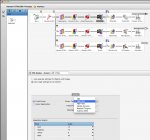Paul Mumford
New member
Hello everyone, our company has recently been upgraded from Apogee 2.x to the latest version. From the following screen grab of a hot-ticket plan, could anyone confirm whether we are using Sublima or not?


According to the agfa engineer who installed the kit, ABS H2S4 is Sublima?!?
According to another agfa engineer AzuraV plates don't support Sublima?
Any help would be great with this conflicting information. Thankyou in advance.
(We previously used Sublima 200lpi on our old system and plates.)


According to the agfa engineer who installed the kit, ABS H2S4 is Sublima?!?
According to another agfa engineer AzuraV plates don't support Sublima?
Any help would be great with this conflicting information. Thankyou in advance.
(We previously used Sublima 200lpi on our old system and plates.)













